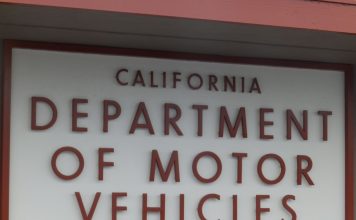GILROY
– Gilroy Unified School District is asking California lawmakers
to give it more control over how proposed budget cuts – now
totaling more than $100 per student – get made.
GILROY – Gilroy Unified School District is asking California lawmakers to give it more control over how proposed budget cuts – now totaling more than $100 per student – get made.
Trustees unanimously approved, at Thursday night’s regular school board meeting, a two-pronged approach they believe would help weather the state’s massive revenue shortfall.
The plan calls for changes in how the state allocates education money as well as how it calculates the amount of money it owes schools. The plan will end up on the desks of Gilroy’s state representatives and Gov. Gray Davis.
Trustees also said they would personally call lawmakers, asking them to consider a number of cost-saving measures, such as putting an end to the state’s practice of earmarking money for specific purposes.
“We need to come up with solutions. I think these are good ideas that can make the budget work,” Trustee Jaime Rosso said.
GUSD wants lawmakers to write one blank check, so the district can spend its share of state monies as it sees fit. Other districts in California are calling for the same, but it will not be clear how state powers feel until the end of this month, when legislators are expected to approve a revised version of the Governor’s proposal for mid-year cuts.
“What we want is one large block grant so we can direct money to core academic programs,” Superintendent Edwin Diaz said who returned from a budget workshop in Sacramento on Tuesday..
GUSD is in the midst of intensive academic program reform. The effort led to the hiring of many specialists across the district charged with improving standardized test scores and closing the gap between the district’s lowest and highest performers on those exams.
Even if GUSD wanted to save money by laying off the teachers and support staff that account for roughly 80 percent of district spending, such cuts are difficult to make given existing contracts.
“I don’t think that’s going to happen,” Diaz said Thursday night, when asked about the likelihood of laying off teachers.
Diaz said in the case of teachers who leave the district, positions would be refilled by substitutes and at the secondary level some classes may get combined.
Part of the budget flexibility plan trustees approved Thursday requests more leniency in carrying out class-size reduction. State law requires kindergarten through third-grade classrooms to have only 20 students for every one teacher.
GUSD wants the state to base that ratio on a school-wide or district-wide average, potentially saving it $500,000 a year. Class-size reduction is funded by the state, but GUSD spends roughly $325,000 of its own funds on the program each year, according to district records.
Michelle Nelson, president of the Gilroy Teachers’ Association, told trustees that any flexibility granted by the state should not exceed 22 students to a class.
Recommendations for budget flexibility
• Allow districts to spend money earmarked by the state for specific purposes as each district sees fit.
• Average the 20-to-1 student-to-teacher ratio on a district-wide basis, instead of a classroom-by-classroom basis.
• Eliminate duplicative standardized tests.
• Defer the purchase of new textbooks until the fiscal crisis is over.
• Defer certain state laws regarding employee wages until the fiscal crisis is over.
• Eliminate teacher recruitment centers since many districts could be laying off teachers next school year.
• Eliminate duplicative report card requirements.
• Reduce the amount of money districts must keep in their “rainy day” funds.
• Allow districts more flexibility in using money raised when real estate is sold.












